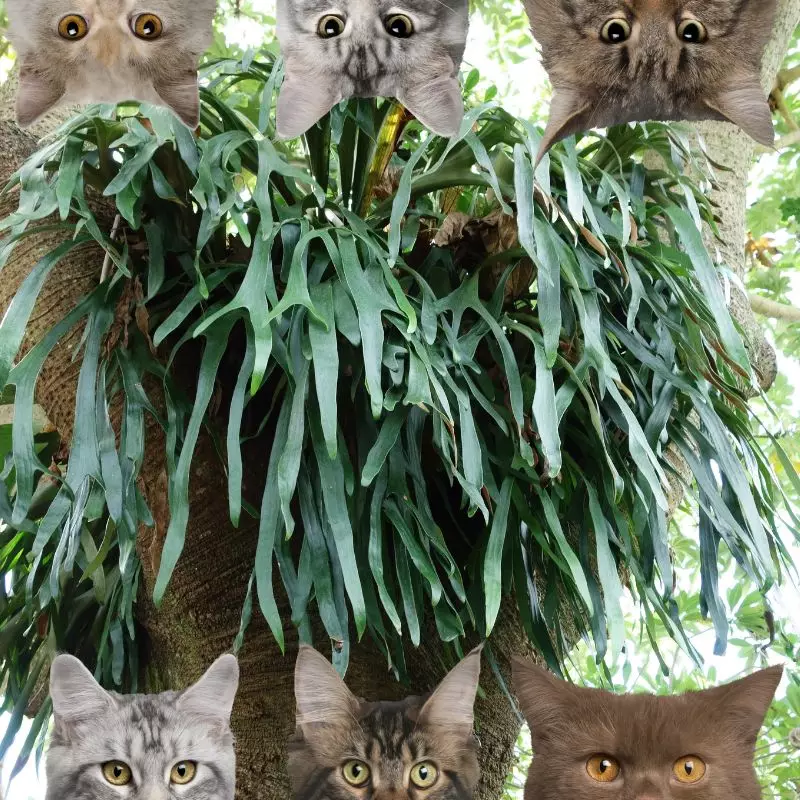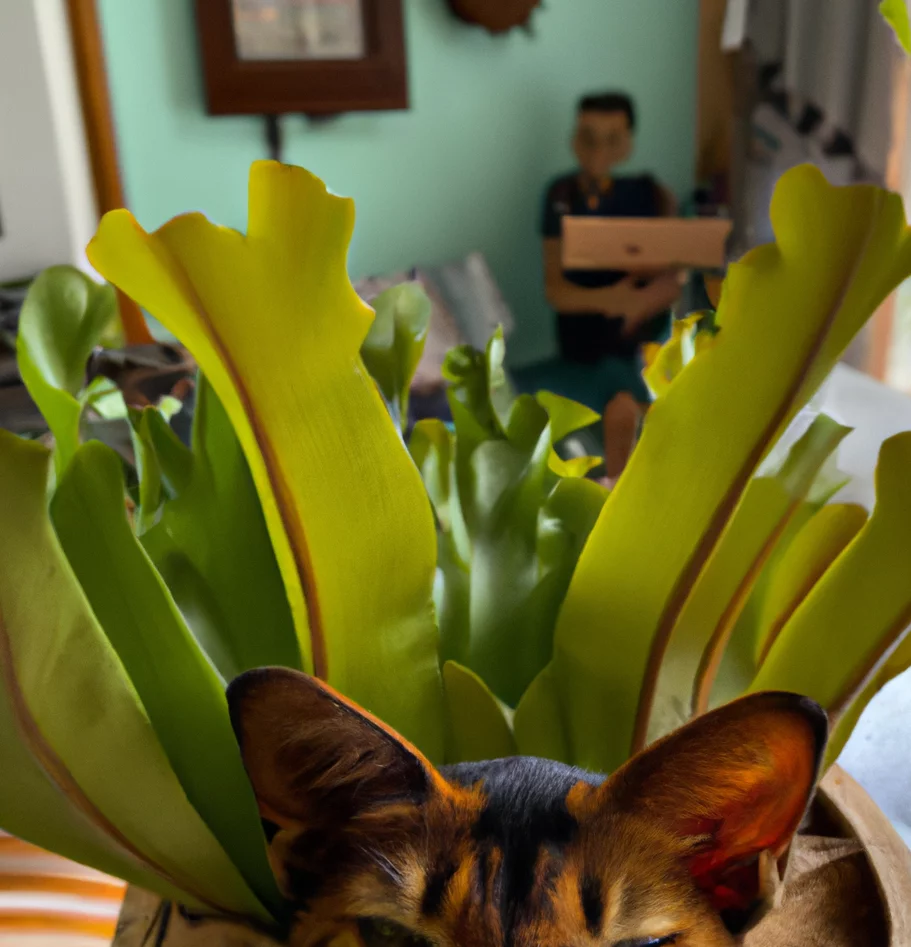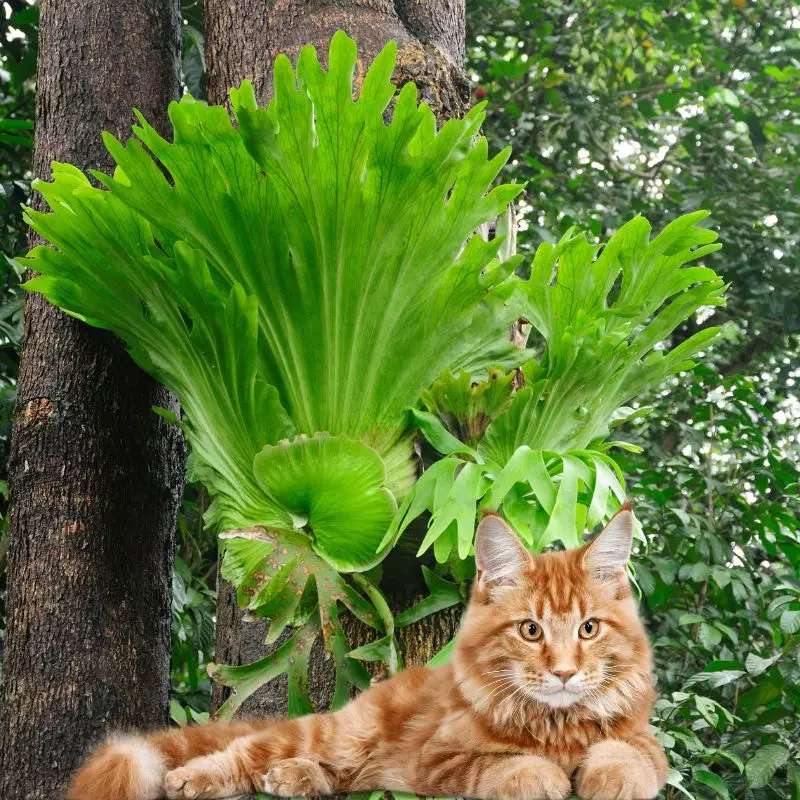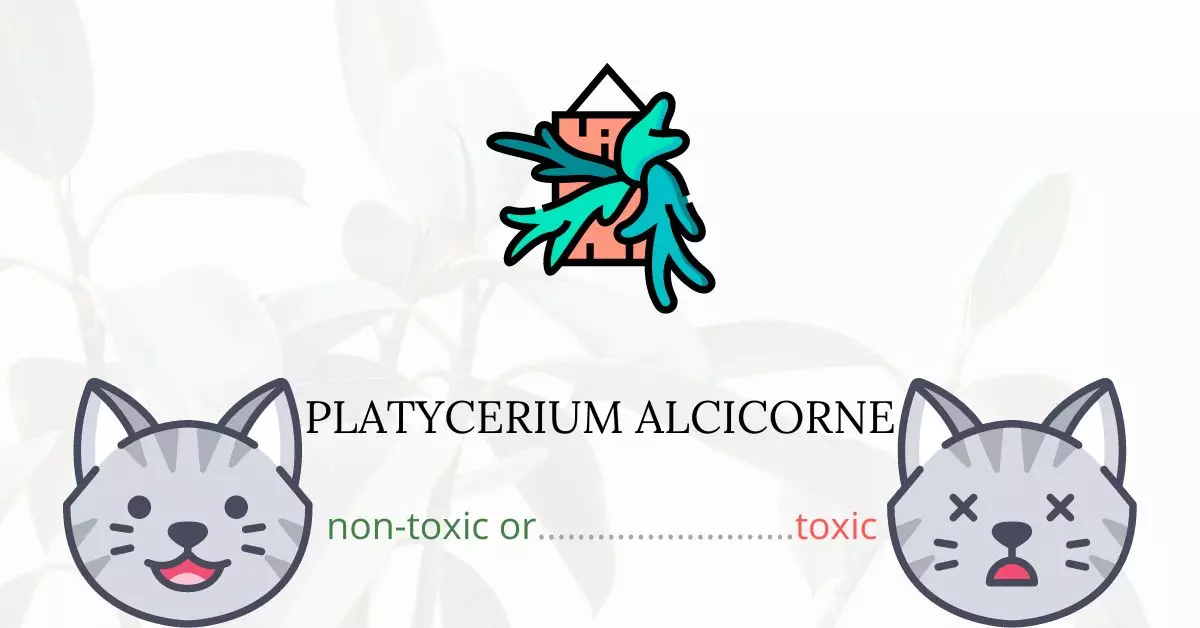Platycerium Alcicorne, commonly known as the Staghorn Fern, is not toxic for cats. Based on our extensive research, which includes insights from high-authority websites such as ASPCA and PetMD, this Polypodaceae plant is recognized as safe for our feline companions.
Furthermore, this article has been crafted in collaboration with a team of experienced DVMs (doctors of veterinary medicine). Through their invaluable contributions, we are able to provide accurate and up-to-date information on the potential risks associated with various plants, with a focus on Platycerium Alcicorne in this case. Although the Staghorn Fern is deemed safe, cat owners should remain vigilant, especially if their cats have a penchant for nibbling on plants.
Can Cats Eat Platycerium Alcicorne or Staghorn Fern?

You do not have to panic if your feline pal has eaten a small bit of Platycerium Alcicorne. It will not harm them to have a taste of this plant. But, be careful because overeating can still cause them to suffer from indigestion.
Since felines are carnivorous species, their bodies are not prepared to digest plant matter. They lack the enzymes that can fully process plant materials in their stomach. When cats have indigestion, they may show signs of abdominal pain, vomiting, and diarrhea. The symptoms are only temporary as they will typically go away after the cats’ bodies have eliminated the plant materials.
What is Platycerium Alcicorne or Staghorn Fern?

Platycerium Alcicorne is commonly known as Staghorn Fern. This fern is indigenous to Mozambique and Madagascar. They are epiphytic ferns that grow to be 80 cm tall and 90 cm wide.
They have different kinds of leaves: those that hang horizontally and are wide enough to cling to the branches of trees, and those that hang vertically and resemble elk horns. The leaves have a waxy layer that keeps water from evaporating. They don’t make flowers.
They are grown as houseplants and in greenhouses. They may be cultivated outside in the summer under moist moss on walls and trees.
During the growth season, they require high humidity, but the leaves should not be sprayed directly since they might rot. The Platycerium alcicorne requires semi-shade or shadow exposure, avoiding direct sunlight. They cannot withstand temperatures of 15 degrees Celsius. It is a sensitive plant that does not tolerate direct sunlight or dry heat from heating.
Keeping Cats Away From Platycerium Alcicorne or Staghorn Fern

Scents are one method for keeping cats away from your plants. Citrus peels can be chopped up and put in the pot’s base. Even when mashed finely, they may emit a distinct citrus aroma. You might as well use the lemon juice if you’ve already removed the lemon peels. Distilled citrus juice may be sprayed straight over the leaves of your potted plant.
You should also know that citrus oil may be extremely poisonous to cats. As a result, I would not recommend utilizing essential oils, such as those used in diffusers.
Training your cats is the most effective technique. Cats react positively to behavioral instruction. Every cat has to be litter box trained. They can be also taught to remain off the counter, quit scratching at the furniture, and stop eating your houseplants.
Plants to Avoid For Your Cats
If you are a cat owner and unsure if the plants growing in your yard are harmful to your cats, check out this list of toxic plants for cats. You can also check our list of non-toxic plants for cats.





